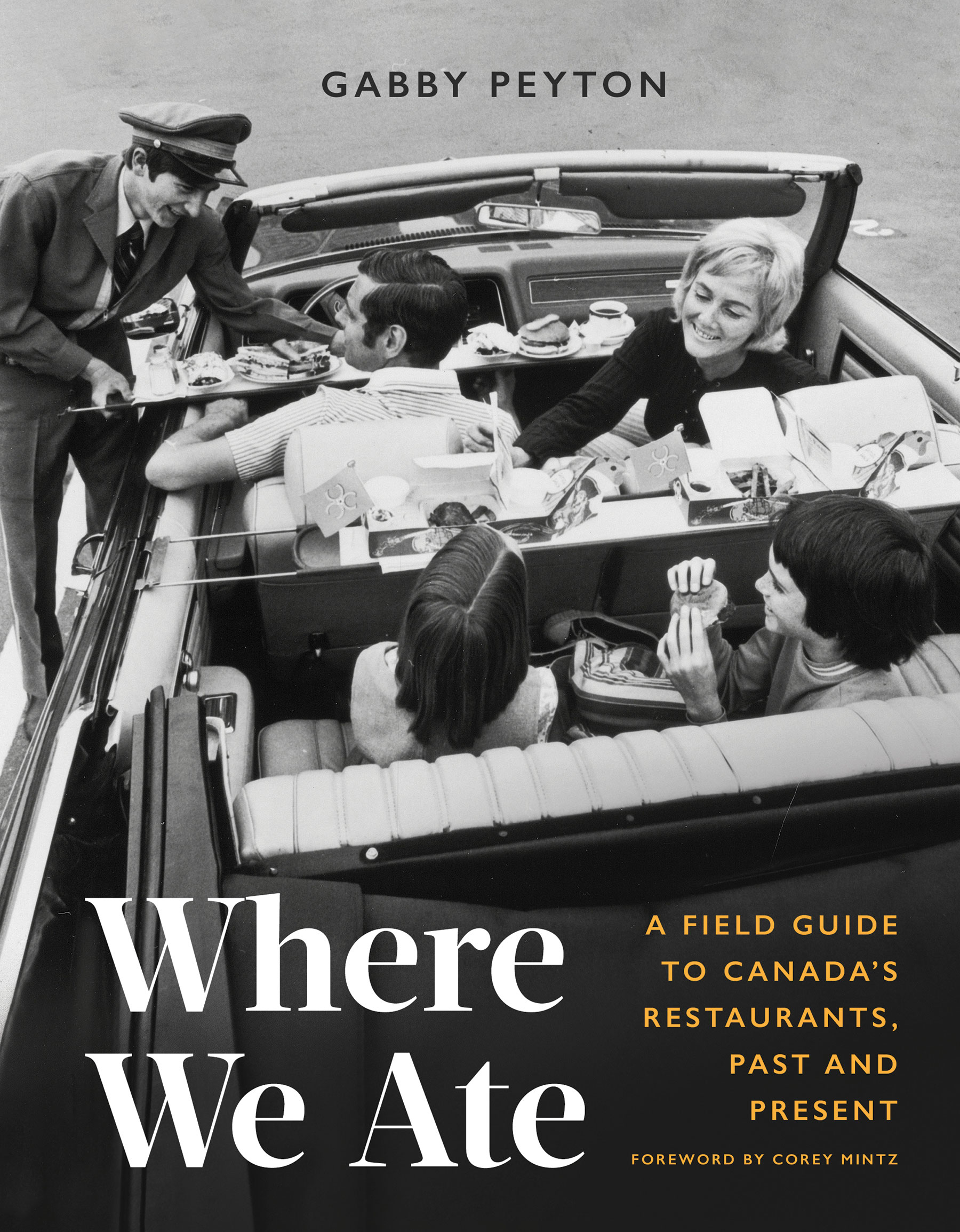A Taste of Canada: New Book Traces the Cultural Influences That Shaped Our Dining-Out Habits

Lobster rolls from Richard’s Fresh Seafood, P.E.I. Photo: ©Richard’s Fresh Seafood
Half the fun of Where We Ate comes from the table of contents, an appetizer that only heightens anticipation for food writer Gabby Peyton’s “field guide” to Canadian restaurants.
As your eye travels down the list of eateries – organized by decade, beginning with pre-Confederation and ending in the 2010s – be prepared for a stab of recognition, followed by a tsunami of nostalgia, as you travel back in time to relive your first blintz or plate of chicken balls smothered in red sauce.
“There’s been so much talk about Canadian cuisine … but I wanted to give a face to all the people who invented poutine and invented donairs; all those mom-and-pops across Canada,” the St. John’s-based restaurant critic and food blogger says in a phone interview. “I wanted to give them some love.” Or, as she writes in her introduction: “It’s not just about what you ate, but where you ate.”

Indeed, I couldn’t recall what I ordered at Toque!, chef Normand Laprise’s shrine to Quebec gastronomy in Montreal, only that I treated my aunt and uncle to dinner and paid for it with my first company credit card. Likewise, I don’t remember what I ate at the now-shuttered North 44, chef Mark McEwan’s upscale Toronto eatery, only that it was my second anniversary, I was pregnant and I couldn’t have wine.
Then there are the places where the meal was the memory, like the best latkes and pea soup in the world at Toronto’s United Bakers Dairy; dripping garlic bombs wrapped in pita that my university friends and I would wolf down at 2 a.m. at King of Donair in Halifax; and the greasy cheeseburgers we groggily ate the next day at the Ardmore Tea Room – the only cure for a hangover.
Peyton heard a lot of these reminiscences as she talked to people about the book, which includes snapshots of 150 restaurants (out of an estimated 70,000 open today) and covers every province and territory. She’s not offended if you linger on the contents page like me, but if you stop there, you’ll miss the point.

“I show that there is no one Canadian cuisine, and that’s the beauty of [it],” Peyton explains. There’s just “this amazing patchwork quilt of all these different people who have come from all over the world and created this unique cuisine that doesn’t really exist anywhere else.”
That includes ginger beef, a Chinese Canadian dish invented by chef George Wong in the ’70s at the Silver Inn Restaurant in Calgary, who noticed Westerners liked deep fried food submerged in gravy. They couldn’t take the heat, though, so he battered the beef and cooked up a sweet chili and ginger sauce.
In an essay at the beginning of each chapter, Peyton explains the Canadian socio-economic environment that shaped our dining-out habits, as well as the geopolitical forces that drove immigration and continually changed the way we eat. For example, after the federal government repealed the racist Chinese Immigration Act in 1947, she notes there were 44 Chinese-owned restaurants in Halifax by 1952.
“Chain migration” – where immigrants from the same area settle in the same place in Canada – partly explains the curious Canadian phenomenon of Greek-owned Italian joints. Peyton interviews Olympia Pizza owner George Kerasiotis in Vancouver, who, when asked why he opted to make pies instead of spanakopita, told her: “Every Greek was opening a pizza and pasta place.” We also have Greeks to thank for Boston Pizza – Gus Agioritis opened the first one in Edmonton in 1964 – and even the controversial ham-and-pineapple topping. After the late Sam Panopoulos stopped in Naples on his way from Greece to Canada, and tasted pizza for the first time, he put it on the menu when he opened the Satellite Restaurant in Chatham, Ont., in 1962. He was experimenting with new flavours when he reached for a can of pineapple – brand name, Hawaiian – and tossed it on a pie with some cubed ham.
“I’m hopeful that this book will provide a spotlight on thousands of immigrants who came to Canada, opened a restaurant and changed the landscape of our dining scene,” Peyton writes, “even if we didn’t notice while we were slurping on those noodles.”
A version this article appeared in the June/July 2023 issue with the headline ‘A Taste of Canada’, p. 80.
RELATED
Try This East Coast Donair Sauce Recipe, Inspired by a Legendary Halifax Eatery
For a True Taste of Texas, Try Pitmaster Darien List’s Slow-Cooked Pork Ribs
“Simple Feel Good Food”: Recipes From Bestselling Cookbook Author Jeanine Donofrio